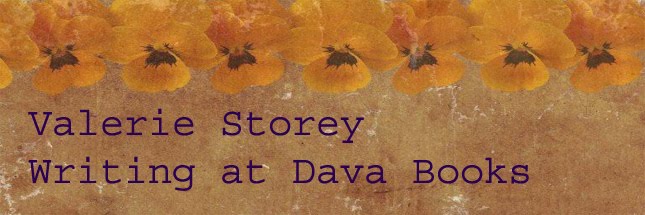Two days to go and here I am, preparing for yet another July and another Camp NaNoWriMo! 50,000 words in 31 days; a totally off-the-cuff decision to participate, but one I'm actually pretty excited about.
To get myself ready for the big event I've got a new notebook, my favorite pen and extra cartridges of my favorite violet ink (yes, I always write my first drafts by hand), a good supply of snacks, and a dozen or more excellent cafes to visit for those days when I have to write with a latte or else.
But with all the supplies and comforts in the world, there inevitably comes that moment when I'm half-way through my coffee as well as my daily quota (1,613 words per day to be precise) and I'm hit with: "Oh, no--I'm stuck! What comes next? What on earth should I write?"
Which is why I've always found it more than useful to have a list of writing prompts ready to go.
Back in 2021 I shared a similar list that you can view here if you feel you need for even more suggestions to help the words flow. All of my prompts, this year and those before, are simply to get things moving again, especially for those times I've lost a sense of who my characters are and why they're doing what they're doing. The prompts can be used for new scenes, back story, or just to shake things up and go off on an unexpected tangent. I know this can sound a little scary to dedicated plotters, but as a life-long pantster, I highly recommend the surprise of the road not only less-traveled, but also going for the one you never knew was there in the first place.
So here we go: 31 prompts for 31 days. Use them, share them, change or tweak them to fit your own story needs. Whatever you choose to do, the main thing is to keep writing!
- Write about an inheritance that isn't about money.
- Add a character obsessed with the paranormal. How does this affect your plot?
- A character accidentally stumbles onto a movie set. How, what, why?
- Three secrets your main character will never tell.
- Three secrets your villain wants to tell the world about your main character.
- Characters: main, villain, secondary--one of them witnesses an illegal act. How will this pivot the plot into a new direction?
- Write about the time one of your characters went to summer camp when they were ten years old and hated it.
- The same character had a completely different experience at the same camp whey they were fourteen. What happened?
- An unexpected job offer. What and why?
- Write about your characters' feelings about relationships.
- A costume party with sinister undertones.
- Your main character is going to an event but loses the invitation or the tickets. What happens now?
- A visit to an animal shelter.
- Several of your characters are having an argument about religion. Why? What are they saying? What is the aftermath?
- Write about a new skill or hobby your main character is learning and why they want to learn it.
- Choose a favorite piece of music for each of your characters. Write about why it's their favorite and how they feel when they hear it.
- What is your main character's imaginary "safe place"? When do they most often go there?
- Write about your villain's favorite book and how it has influenced them to be who they are today. How will it figure in your plot?
- Write about a childhood rejection.
- What is your main character's most meaningful piece of jewelry and why? What would happen if it was lost? Lose it.
- A sudden, forgotten memory. What triggered it?
- An event your main character doesn't want to attend. Why?
- Write about a time your main character said "no" and regretted it.
- Write about a time your main characters said "yes" and regretted it.
- A neighbor knocks on the door in the middle of the night. Why?
- Your main character finds a hidden letter in a used book.
- Your villain steals something valuable. What and why and how will this change everything?
- Write about your characters' feelings about children.
- What was the worst thing a parent or teacher ever said to your main character and how did that affect the rest of their life?
- Write about a dinner party that includes both your main character as well as your villain.
- No matter what point you've reached in your story--write the beginning to your sequel!




